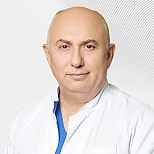Author: ophthalmologist, head of the eye clinic RAID Elias
EMC specialists not only help restore vision when it deteriorates after 40-45 years with the help of laser correction, but also correct errors caused by replacing their own lens with mono- and multifocal lenses in patients with age-related hyperopia.
After the age of 40-45, almost everyone inevitably experiences age-related hyperopia (presbyopia), when a person sees objects well from a long distance, but cannot see things up close.
Presbyopia develops due to the fact that the elasticity of the lens decreases with age.
The oldest and easiest way to solve the problem of age-related hyperopia
The easiest way is to pick up glasses. But this option is not suitable for all people.
Firstly, glasses narrow the field of vision, which causes obvious inconvenience.
Secondly, wearing glasses also causes psychological discomfort to many people. If a person has never worn glasses before the age of 40-45, and then there is an urgent need to do so, it will most likely be difficult for him to get used to them. You may even feel dissatisfied with your appearance.
Thirdly, there are professions in which wearing glasses is impossible for one reason or another: athletes, artists, etc.
Fourthly, glasses can cope with a simple problem - only farsightedness, but in cases of combined, for example, with farsightedness with astigmatism or cataracts, it is almost impossible to pick up glasses.
Laser correction is a modern way of treating presbyopia
In 2005, in London, the head of the EMC Ophthalmology Clinic, Raidh Elias, together with his foreign colleagues, created calculations according to which the correction was performed. It was a real discovery in the world of ophthalmology. The first Russian operation for laser correction of farsightedness was performed by a doctor at the EMC in 2006.
Until now, laser correction for age-related hyperopia is performed in only a few clinics in the world, due to the complexity of calculations, and the EMC doctor conducts it regularly.
During laser correction of presbyopia, the doctor performs complex corneal resurfacing, affecting different areas of the cornea. Such complex grinding allows you to get rid of an imperfect transition zone – that is, loss of sharpness during the transition between distant and near objects.
Multifocal lenses are another modern, but not ideal way to solve the problem of age–related hyperopia
A multifocal lens, or a multifocal lens, is an artificial lens that is implanted into a person to replace their own lens. Initially, such lenses were given to people with cataracts. But the first artificial lenses could not provide truly good vision. It was necessary to use glasses anyway.
With the development of technology, multifocal lenses began to be manufactured, with which one could see well both near and far. But when switching between distant and near objects, vision was still "lost". However, this problem was also solved over time. And then people with presbyopia began to use multifocal lenses.
When presbyopia lens replacement operations began to be carried out en masse in our country, many complaints began to be received from patients. Someone complained about the doubling of letters or objects in low light. Others couldn't drive in the dark because of the glare of the headlights. The reason for these complaints is incorrect alignment during lens replacement.It is different for all people, and it is difficult to determine it without special equipment. Even today, by agreeing to surgery in clinics that do not have this equipment, patients risk experiencing postoperative problems.
Laser correction as a way to solve postoperative lens replacement problems
Our Clinic's specialists, in particular Dr. Elias, help patients solve the problems they face after replacing their "native" lens with an artificial one (mono- or multifocal). For this, laser vision correction is performed. The operation, together with the preparatory stage (instillation of the eyes with special drops), lasts no more than 10-15 minutes.
Not all clinics today can provide such assistance to patients with postoperative problems. Dr. Elias' many years of experience and special state-of-the-art equipment, the Abbot iDesign Advanced scanner, make it possible to correct optical aberrations that occur after surgery.
Many patients still visit Dr. Elias at the EMC after lens replacement, including from abroad. The doctor takes on the most difficult cases and helps to correct vision after unsuccessful operations.
Advantages of contacting the EMC
-
We help to solve the most difficult vision problems after lens replacement.
-
We treat complex and mixed astigmatism, which was previously considered impossible. Such complex operations are performed thanks to diagnostic results on the only Abbot iDesign Advanced device in Russia.
-
In addition to the Abbot iDesign Advanced device, the Clinic has modern Intralase femtosecond equipment with the latest generation VISX Star S4 IR excimer laser.
-
The Ophthalmology Clinic is headed by Raed Elias. In more than 27 years of work, the doctor has performed about 10,000 laser surgeries, including Russia's first correction of age-related hyperopia.We provide outpatient and inpatient care for adults and children.











.webp)




.webp)
